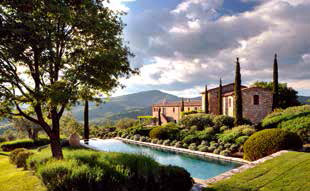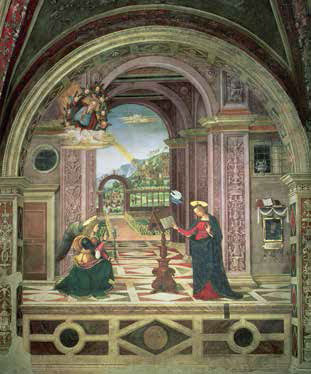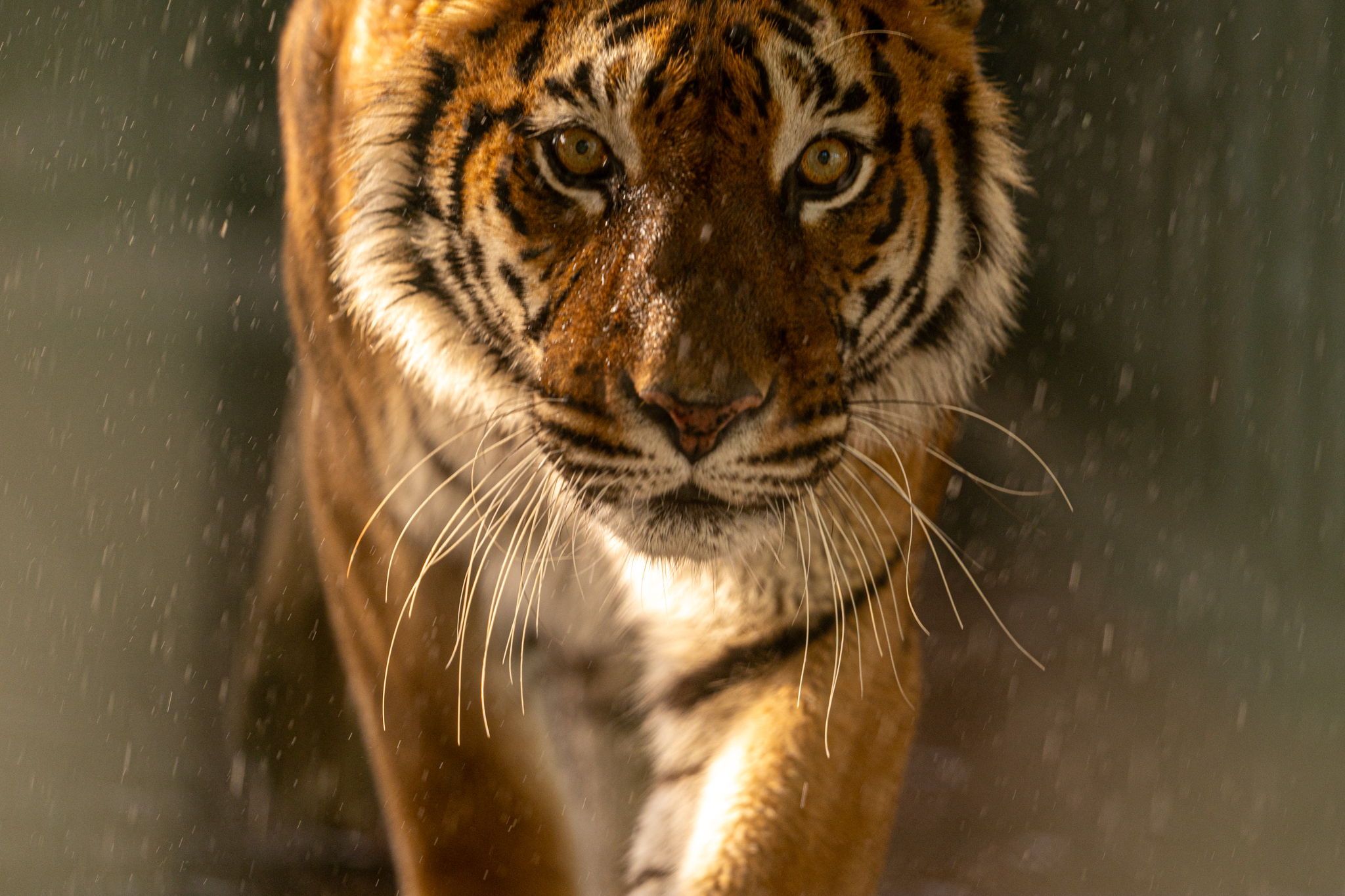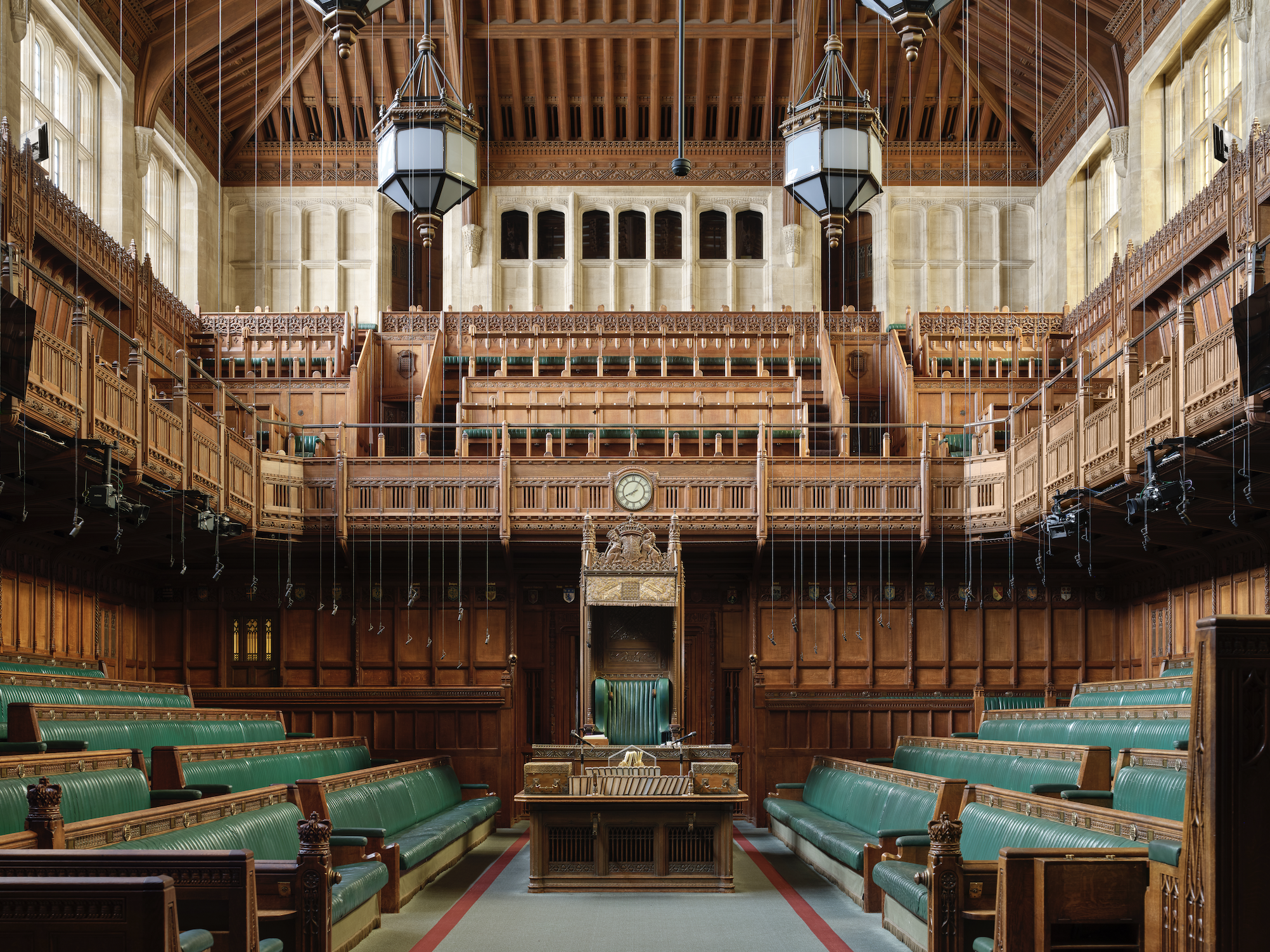Two middle-aged ladies, one beautiful Fiat, and a magical week in Umbria
Mary Miers teamed up with an old friend as she visited one of Italy's most enchanting regions.


In 1976, I had a school table head who so terrified me that, for a whole term, I dreaded mealtimes, ate little and uttered scarcely a word. Little could I have imagined that, 40 years later, we’d be eating our way round central Italy together: two middle-aged women barrelling along in a Fiat Cinquecento on a cultural tour of Umbria.
‘Ah, we Italians, we love you English Ladies in Lavender,’ purred the Avis manager as he escorted us to our silver Audi. But no! We had our eyes on the jaunty, teal-coloured Fiat and, ignoring Giuseppe’s remonstrations, crammed our luggage into its tiny boot and cajoled him into handing over the keys.
It was a triumph: everywhere we went, people smiled and flirted to a degree I had never experienced when last here, studying Italian in Perugia aged 18. That town has changed a lot since 1980 and I was keen to revisit old haunts, so we squeezed into the funky Minimetro and ascended into its ancient heart.

Unwittingly, we’d chosen the weekend of the world’s largest chocolate festival and the home of the famous Perugina Baci was decked out with pavilions selling chocolate in every conceivable guise. Anywhere else, this might have been ghastly, but here, spilling down Corso Vannucci between the pale-stoned palazzi, it was an exhilarating pageant – a perfect excuse for a promenade after an intensive stint in the Galleria Nazionale dell’Umbria.
I say intensive, because my travelling companion, Ann Buchanan, is a formidable guide. An art and art-history teacher, married to an artist, she knows all about the technical and aesthetic properties of historic materials, as well as the painters and their styles. I’d started the week with a crash course in the early Renaissance on her Art Study tour in Florence; now, in the treasure house I’d found so monotonous as a teenager, I could appreciate the Umbrian School of painting in all its glory and context.
Perugia is one of the unsung delights of Italy. Don’t be put off by its peripheral sprawl; parts of the city are still recognisable from late Gothic paintings. Built by the Etruscans on a series of rocky spurs, it combines plunging, canyon-like streets with stately parades of Renaissance palazzi in a thrilling counterpoint of elegance and austerity, light and shade. Ancient walls and gateways and the vast ramparts of the Rocca Paolina preside over a soft, rolling landscape.
At its heart is my favourite Italian square: the charmingly irregular Piazza Quattro Novembre, with Pisano’s Romanesque fountain as its crown, offset by the delicious pinkand- white marble-patterned Duomo and breathtaking Palazzo dei Priori.
Exquisite houses, the beauty of Nature, and how to get the most from your life, straight to your inbox.
The dramatic situation of so many of Umbria’s hill towns is matched by the turbulence of their histories. Dynastic feuds, sackings and papal encroachments make it a wonder that this region fostered such artistic vitality, yet, despite later Napoleonic plundering, even the smallest chapels preserve a fresco or altarpiece of interest.
Among the highlights we sought out were works by the great Umbrian master who taught Raphael. Perugino, more than any other, absorbed the lessons of Piero della Francesca and combined the naturalism of his Florentine teacher Verrocchio with a feeling for his native countryside. One of the joys of travelling through Umbria today is that it so often resembles a Quattrocento landscape.
From the flat plain of the Valle Umbra, you can see Assisi’s gleaming Basilica riding above its arcaded bulwarks on the slope of Monte Subasio.

A stop here is essential for understanding the rich sources of artistic influence on the Umbrian School— not to mention the deep spirituality that pervaded the region in the wake of St Francis. Nowhere else can you see such a comprehensive survey of the 13thand 14th-century masters, notably Cimambuie, Giotto and Cavallini from Rome and Lorenzetti and Martini from Siena – or, indeed, such important medieval stained glass.
A short spin in the Fiat found us lunching in the October sunshine beside a magnificent Roman portico. We’d come to the charming little town of Spello to seek out another Umbrian artist who trained with Perugino: Pinturicchio.
Fumbling for more Euros, we begged the caretaker in Sta Maria Maggiore to re-illuminate the Baglioni Chapel so that we could look again at the exquisite frescoes.
It’s difficult to imagine how candles could have ever done justice to these paintings, with their jewel-like colours and lambent light, all so reminiscent of Venetian art and, more specifically, Raphael. However, Raphael and Michelangelo were starting work in the Vatican when these frescoes were being done in the early 1500s and Leonardo was painting the Mona Lisa.
Pinturicchio may not have been innovative, but his narrative paintings excel in architectural and decorative harmony and seem wonderfully fresh. We looked at his Bellini-like Madonna in Sant’ Andrea just up the road and tracked him down again the following afternoon in the shadow of the great papal fortress of Spoleto. There, in the Duomo, you can see his frescoed chapel, as well as Fra Filippo Lippi’s final work.

We continue our journey south, Ann driving, me map reading and leafing through our portable library. So far, we’ve been lucky not to encounter any ‘chiuso per restauro’ signs, but we’ve already missed one significant church interior by stopping for a late breakfast (most churches close at midday), prompting Ann to reiterate her mantra: ‘Always take the opportunity to go in if you see a church door open.’
Time is running out and the choice is agonising. Foligno? Bavagno? Trevi? No, we must head straight for Montefalco (frescoes by Fra Angelico’s assistant Benozzo Gozzoli), then Todi on its hill above the Tiber valley and Orvieto on its clifftop. Orvieto’s grey-and white-striped Gothic cathedral is, without doubt, the finest in Umbria: we could not miss its façade of bas reliefs and gilded mosaics and chapel frescoed by Fra’ Angelico and Luca Signorelli.
I had fallen in love with Todi on a previous visit, charmed by its intimate piazza like a medieval stage set and the celestial views of the Martani hills. Now, we were wrapped in a dense fog, but the town still felt magical nonetheless and we took a childish delight in peering through the murk at carved figures crouching among acanthus leaves on a church portal and stumbling upon Roman fragments including the niches of a vast forum.
Our trusty Fiat had defied Giuseppe’s scorn. Small enough to squeeze down medieval alleyways, it was also high enough to negotiate the steep, rough tracks of Tenuto di Murlo, something the Audi could never have managed. The estate lies just north of Perugia and we were booked in to stay in one of its farmhouses—Santa Croce, atop the mountain of that name.
Italy is famous for its agriturismo; now, Umbrian landowners have pioneered a new form of rural accommodation, restoring redundant farm complexes as smart holiday lets with access to a range of private services and activities.
Most impressive is the Bolza family’s Castello di Reschio, 3,000 acres of wooded hills surrounding a castle near Lake Trasimeno (see box). Here, you can rent a villa down a remote track and retreat into an island of luxury, with only your infinity pool and the pinprick of a solitary hilltop village to hint at human habitation.
You could happily spend an entire holiday here, but, for culture vultures and Piero della Francesca fans, there’s tiny Monterchi on a green hill nearby, with his serene Madonna del Parto, and Sansepulchro, home to his Resurrection.
We ended our week in the birthplace of St Benedict, ringed by the fecund woods of the Monti Sibillini national park. The walled city of Norcia gave its name to the butcher’s shop (norcineria) and is famous for its cured meats, truffles and artisan foods.
Tragically, two days after we left, 70% of Norcia was destroyed by an earthquake. It will rise from the rubble as it has done so often. Resilient citizens will restore its eight churches and sturdy squares and Norcia will sustain its reputation as the gastronomic hub of central Italy.
Mary Miers
Where we stayed
San Lorenzo Tre, Todi
A 17th-century palazzo with old-world charm: painted ceilings, terracotta floors, family photographs, proper sheets and blankets. The lack of modern bathrooms was more than made up for by character. Garden and roof terrace (www.sanlorenzo3.it)
Castello di Reschio
An estate with a castle (currently being restored as a hotel) and 50 historic farmhouses, 25 of which have so far been restored and sold as luxury villas, some available to rent. The Bolzas are committed conservationists, keen to preserve the local vernacular.
The design work is all carried out on site by Conte Benedikt Bolza, an architect and interior designer, who works with local craftsmen and has converted the tabaccaia into an art gallery and studio.
Owners buy into the unusual ethos of Reschio, which is centrally managed at every level. Each house has its own gardener, maid and concierge service, as well as access to the estate’s private restaurant, wine shop, fishing, hunting and riding (Andalusian horses are bred and trained here) (www.reschio.com)
Tenuta di Murlo
A 7,500-acre estate with castle and five serviced farmhouse villas, each with its own pool and garden, surrounded by wooded hills and lakes, but just 20 minutes’ drive from Perugia. Restaurant and adjacent Antognolia golf course; yoga, foraging and cookery classes, plus many outdoor activities (www.murlo.com)
Food
Food in Umbria is simple and delicious. Teeming with wild boar, the region excels in cured meats (notably around Norcia), mushrooms and truffles. Try crostini topped with truffles, mushrooms or chickenliver pâté; a casserole of wild pigeon (columbo); torta al testo, the local flatbread; and tazzetti, almond biscuits (like Tuscan cantucci, but with anis) served with vin santo.
Where we ate
Osteria a Priori, Perugia, has the best Umbrian food and wines (www.osteriaapriori.it)
Ristorante Umbria, Todi, has been famous for Umbrian cuisine since the 1950s and for its wonderful terrace overlooking the Monti Martani. In winter, the interior, with its great Renaissance fireplace, is wonderfully atmospheric (www.ristoranteumbria.it)
Osteria at Castello di Reschio (www.reschio.com)
Il Caldaro at Tenuto di Murlo (www.Murlo.com/ il-caldaro-restaurant)
Books
Umbria: A Cultural Guide by Ian Campbell Ross Blue Guide: Central Italy by Alta Macadam 101 Places in Italy: A Private Grand Tour by Francis Russell Tuscany & Umbria: A Collection of Poetry of Place edited by Gaia Servadio
Edinburgh Art Studies
The company is run by Ann Buchanan (01875 341326; www.edinburghartstudies.co.uk)
Mary Miers is a hugely experienced writer on art and architecture, and a former Fine Arts Editor of Country Life. Mary joined the team after running Scotland’s Buildings at Risk Register. She lived in 15 different homes across several countries while she was growing up, and for a while commuted to London from Scotland each week. She is also the author of seven books.
-
 ‘We were off again in a cloud of dust, on the trail of a tiger we eventually ended up making eye contact with’: The art of the Indian safari
‘We were off again in a cloud of dust, on the trail of a tiger we eventually ended up making eye contact with’: The art of the Indian safariAn Indian safari is a ‘is a study in patience and intuition’, but that’s no bad thing, says Richard MacKichan.
-
 We wanna build like common people: The 75th anniversary of the House of Commons' reopening
We wanna build like common people: The 75th anniversary of the House of Commons' reopeningThis year marks the 75th anniversary of the reopening of the House of Commons following the destruction of its predecessor in 1941 during the Blitz. John Goodall reports.
